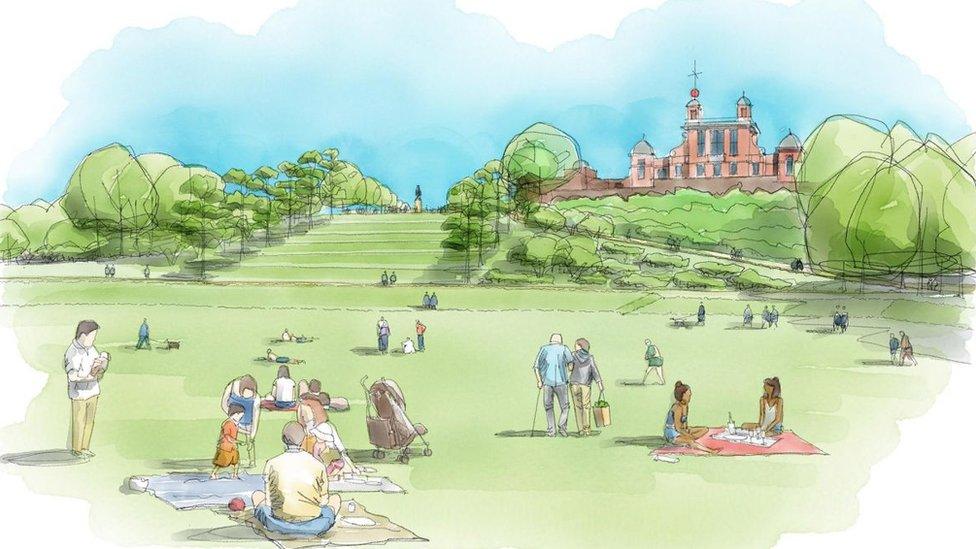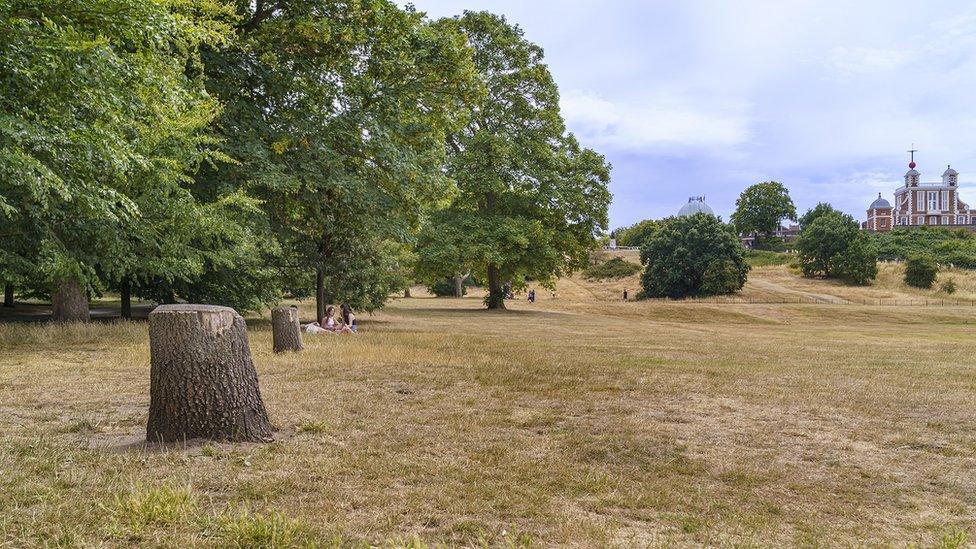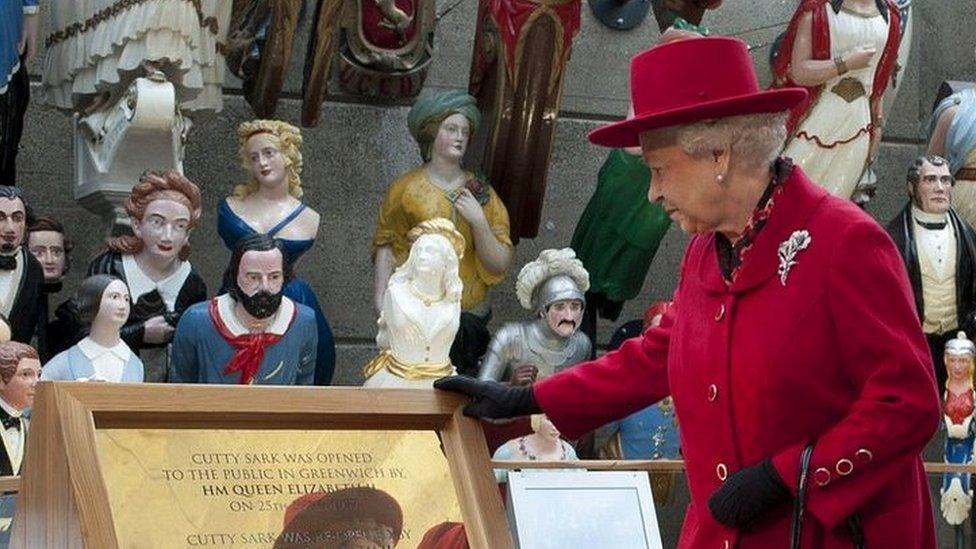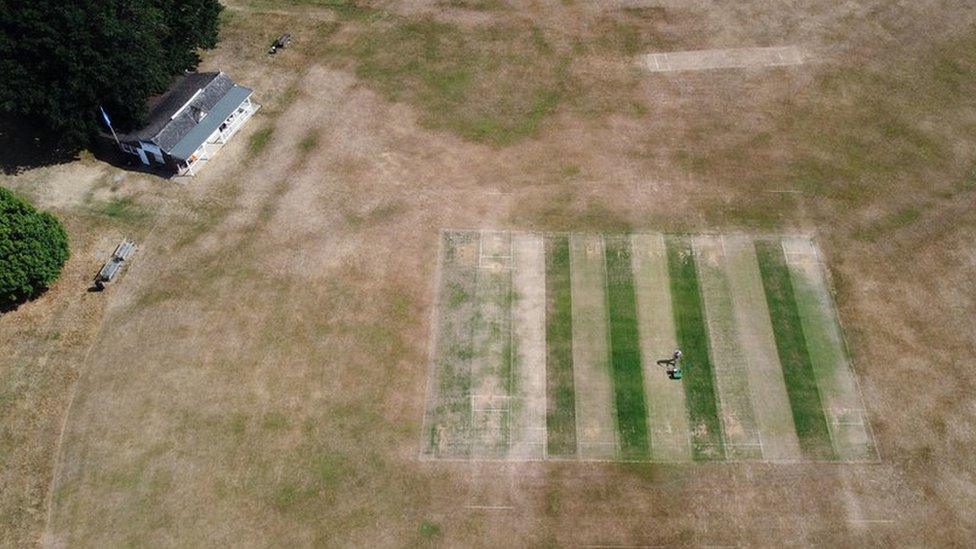Greenwich Park to restore 17th Century giant grass steps
- Published

The grass steps will be cut into the steep hill leading down from the Royal Observatory
Greenwich Park is to restore a set of giant grass steps dating back to the 17th Century.
The steps were cut into a steep bank, which leads up to the terrace of the Royal Observatory, in 1661.
Accelerated by an annual footfall of five million visitors, the Baroque landscape has been eroded over the years.
The new plan, on the cards since 2018, should be completed by 2025, Royal Parks said.
The area, the wild hunting ground of King Henry III, was transformed by André Le Nôtre, the renowned landscape architect behind the Palace of Versailles gardens in France.
He built the giant steps, the Grand Ascent, as a formal banked layout with sweeping tree avenues for King Charles II.

Turkey oak trees succumbed to disease will be replaced by more hardy elms
It provided a symmetrical layout, linking the Thames to Blackheath Gate and beyond but it was only open to the public in the 18th Century.
The new layout will "revive the view that was created for Charles II" but the decision is divisive among residents.
Some fear a building site for months, with others averse to restoring the park specifically to the 17th Century layout.
Royal Parks has said the renovation will benefit wildlife, encouraging bats and birds to form a habitat, as well as boosting carbon absorption.
The current Turkey oak trees will be replaced with lime and hardy elm trees, while several irrigation points connected to ground water to fast-drain soil and prevent flooding will also be installed, says Royal Parks.
It part of a wider restoration project, Greenwich Park Revealed, which includes a host of upcoming community events as well as the restoration that will "future proof" the park.

Follow BBC London on Facebook, external, Twitter , externaland Instagram, external. Send your story ideas to hellobbclondon@bbc.co.uk, external
- Published10 November 2022

- Published13 September 2022

- Published5 August 2022
